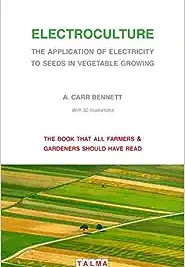Welcome to Electroculture Magazine. Subsistence farming is a self-sufficiency practice where farmers focus on growing enough food to meet the needs of themselves and their families, rather than for commercial purposes. It is a time-honored tradition that has sustained communities for centuries, providing a means of survival and ensuring food security.
In subsistence farming, farmers employ various methods and techniques to cultivate crops and raise livestock. These methods often prioritize sustainability and minimal environmental impact. By growing their own food, subsistence farmers reduce their reliance on external sources and take control of their own livelihoods.
Key Takeaways:
- Subsistence farming is a self-sufficiency practice focused on growing enough food for farmers and their families.
- It is a time-honored tradition that prioritizes sustainable practices and minimal environmental impact.
- Subsistence farming reduces reliance on external sources and ensures food security.
- Subsistence farmers employ various methods such as crop rotation, intercropping, and organic farming.
- By growing their own food, subsistence farmers take control of their own livelihoods.
Historical background of subsistence farming

Subsistence farming has a rich historical background, dating back thousands of years. This agricultural practice, also known as traditional agriculture, has played a vital role in sustaining communities and ensuring food security throughout history.
“Subsistence farming has been an integral part of human civilization since the dawn of agriculture. It emerged as a response to the need for self-sufficiency, where families grew crops and raised livestock to meet their daily sustenance needs.”
The origins of this farming can be traced to early human settlements, where communities relied on indigenous crops and local resources to survive. Over time, the practice evolved, adapting to different cultural, geographical, and societal factors.
In ancient civilizations such as Mesopotamia, Egypt, and the Indus Valley, subsistence farming was the primary means of sustenance. People cultivated staple crops like wheat, barley, and rice, while also rearing livestock for dairy products, meat, and transportation. These early farmers developed sophisticated irrigation systems and practiced crop rotation to maintain soil fertility.
As societies advanced, subsistence farming techniques continued to evolve. Traditional practices such as terraced farming in the Andes and paddy fields in Asia were developed to adapt to specific geographical conditions. These methods reflected the ingenuity of farmers in maximizing agricultural productivity.
Despite the advancements in modern agriculture, subsistence farming remains prevalent in many regions of the world, particularly in rural communities with limited access to resources. It continues to serve as a sustainable way of feeding families and preserving traditional agricultural practices.
Key Points:
- Subsistence farming is a historical practice that dates back thousands of years.
- It emerged as a response to the need for self-sufficiency and has since evolved to adapt to various cultural and geographical factors.
- Early subsistence farmers cultivated staple crops, practiced irrigation, and reared livestock for sustenance.
- Subsistence farming techniques, such as terraced farming and paddy fields, were developed to maximize productivity in specific regions.
- Subsistence farming continues to play a crucial role in ensuring food security and preserving traditional agricultural practices.
Characteristics and methods of subsistence farming
In this section, we will explore the key characteristics and methods employed in subsistence farming, a practice that focuses on self-sufficiency and growing enough food to sustain farmers and their families. As subsistence farming aims to meet individual needs rather than commercial purposes, it emphasizes sustainable practices to ensure long-term productivity.
The Characteristics of Subsistence Farming

- This farming is based on a small scale, typically practiced by rural communities or individual households.
- It cultivates a diverse range of crops and livestock, fostering biodiversity and enhancing resilience against diseases and pests.
- Subsistence farmers often practice traditional agricultural methods that have been passed down through generations, preserving local knowledge and cultural heritage.
- These farmers prioritize self-sufficiency and food security, ensuring a stable food supply for themselves and their families.
Sustainable Practices in Subsistence Farming
In order to sustain agricultural productivity while minimizing negative impacts on the environment, this farming employs various sustainable practices:
- Crop Rotation: By rotating crops, farmers can effectively manage soil fertility and prevent the buildup of pests and diseases. It also helps to maintain a balanced nutrient profile, reducing the need for synthetic fertilizers.
- Intercropping: Planting different crops together in the same field maximizes land utilization and enhances nutrient cycling. It also promotes natural pest control and provides farmers with a diversified range of food crops.
- Organic Farming: Subsistence farmers often avoid synthetic pesticides, herbicides, and fertilizers, opting for organic practices that prioritize soil health and biodiversity. This reduces chemical pollution and promotes a more sustainable ecosystem.
This farming combines traditional knowledge with sustainable practices to ensure long-term agricultural productivity and self-sufficiency.
By implementing these sustainable practices, subsistence farming not only preserves the environment but also supports the subsistence farmers’ livelihoods and the nutritional needs of their communities. These methods foster resilient agricultural systems that are less susceptible to climate change, ensuring food security for present and future generations.
Challenges and benefits of subsistence farming
This farming, while offering self-sufficiency and food security, is not without its challenges. Farmers practicing subsistence farming regularly face various obstacles that can affect their ability to sustain their livelihoods. These challenges include:
- Lack of Access to Resources: This farmers often have limited access to resources such as land, water, and modern farming equipment. This lack of resources can hinder their productivity and limit their ability to maximize their crop yields.
- Limited Market Opportunities: Subsistence farmers primarily grow food for their own consumption, which means they have limited opportunities to sell their surplus produce in the market. This limited access to markets can restrict their income potential and economic growth.
- Vulnerability to Climate Change: Climate change poses a significant threat to subsistence farming. Extreme weather events, including droughts, floods, and unpredictable rainfall patterns, can negatively impact crop production and reduce farmers’ ability to secure their food supply.
Despite these challenges, subsistence farming offers numerous benefits that contribute to sustainable livelihoods and food security:
- Increased Food Security: By focusing on growing enough food to meet the needs of their families, subsistence farmers can ensure a stable and reliable food supply. This self-sufficiency contributes to food security, minimizing the risk of food shortages and dependency on external sources.
- Reduced Reliance on External Sources: This farming allows communities to rely less on external sources of food, reducing their vulnerability to fluctuations in prices and availability. By growing their own food, subsistence farmers can maintain control over their food production and consumption.
- Preservation of Traditional Agricultural Practices: This farming is often deeply rooted in the traditions and cultural heritage of communities. By practicing subsistence farming, these communities can preserve traditional agricultural techniques and knowledge, ensuring their continued transmission to future generations.
“Subsistence farming presents challenges, but its benefits, such as increased food security and self-sufficiency, make it a vital practice for sustaining livelihoods.” – [Author]
Challenges and Benefits of Subsistence Farming
| Challenges | Benefits |
|---|---|
| Lack of Access to Resources | Increased Food Security |
| Limited Market Opportunities | Reduced Reliance on External Sources |
| Vulnerability to Climate Change | Preservation of Traditional Agricultural Practices |
Conclusion
Throughout this article, we have explored the concept of this farming and its significance as a self-sufficiency practice. Subsistence farming, as we have discussed, focuses on growing enough food to meet the needs of farmers and their families. It is a sustainable approach that emphasizes the use of traditional agricultural methods and practices.

We have also examined the historical background of subsistence farming, highlighting its evolution over time and the factors that have influenced its development. Additionally, we have discussed the characteristics and methods employed in subsistence farming, including sustainable practices that promote productivity while mitigating negative environmental impacts.
Despite the challenges faced by subsistence farmers, such as limited resources and vulnerability to climate change, there are several benefits associated with this practice. Subsistence farming plays a vital role in sustaining livelihoods, ensuring food security, and preserving traditional agricultural techniques.
In conclusion, this farming is a valuable practice that fosters self-sufficiency and resilience among farming communities. By embracing sustainable methods and techniques, subsistence farmers contribute not only to their own well-being but also to the preservation of our ecosystems and the long-term food security of the global population.
FAQ
What is subsistence farming?
Subsistence farming is a self-sufficiency practice where farmers focus on growing enough food to meet the needs of themselves and their families, rather than for commercial purposes.
What is the historical background of subsistence farming?
This farming has a long history, dating back to traditional agricultural practices. It has been shaped by cultural, geographical, and societal factors throughout time.
What are the characteristics and methods of subsistence farming?
Subsistence farming relies on sustainable practices such as crop rotation, intercropping, and organic farming. These methods help maintain productivity while minimizing negative environmental impacts.
What are the challenges and benefits of subsistence farming?
this farming faces challenges such as limited resources, limited market opportunities, and vulnerability to climate change. However, it also offers benefits including increased food security, reduced reliance on external sources, and the preservation of traditional agricultural practices.
What is the conclusion of subsistence farming?
Subsistence farming is a vital practice for self-sufficiency and food security. It plays a crucial role in sustaining livelihoods and preserving traditional agricultural practices.











